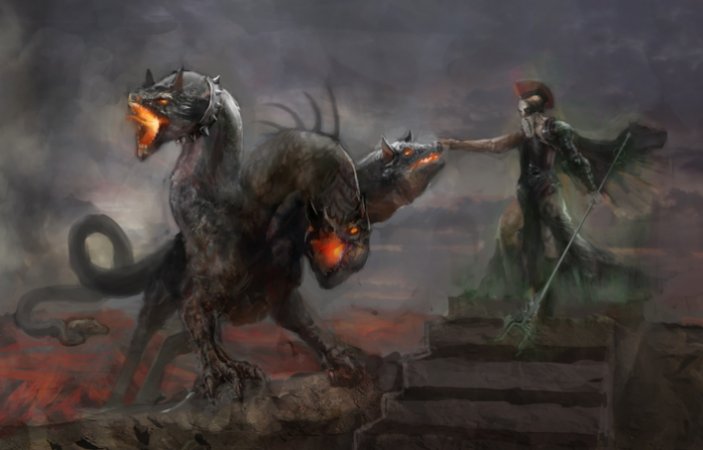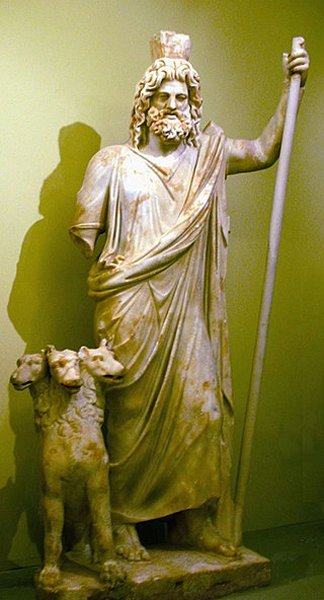Cerberus – Giant Multi-Headed Dog Guards The Underworld Of God Hades In Greek Mythology
Ellen Lloyd - AncientPages.com - Cerberus is a famous monster in Greek mythology. Often described as a giant three-headed dog, Cerberus guards the gates of the Greek underworld, ensuring that no one escapes from the realm of Hades, the god of the dead and the king of the underworld.
Cerberus guarded the underworld, the realm of God Hades. Credit: Stock photo
Stories of Cerberus are mentioned in both Greek and Roman mythology. The depiction of this multi-headed creature depends on the ancient source material. In most cases, Cerberus is described as having three heads, a serpent for a tail, and snakes protruding from parts of his body. Each of the heads is uglier than the other. In some myths, the three heads represent the past, present, and future.
Multi-headed animals are often encountered in ancient myths and legends. In Hindu mythology, for example, we learn about the legendary Uchchaihshravas, a divine, seven-headed flying horse of God Indra. However, in other ancient accounts, such as Hesiod's Theogony, Cerberus has as many as 50 heads, and Pindar (c. 522 – c. 443 BC), an ancient Greek poet from Thebes, gave the monster as many as 100 heads.
Cerberus Predates Ancient Greek Gods And Goddesses
There are many myths about Cerberus, and this guardian dog is mentioned in the Orpheus legend and the 12th labor of Hercules.
As a primordial being predating the Greek gods and goddesses, Cerberus is a unique creature in Greek mythology. According to some Greek myths, Cerberus is associated with Hydra. Cerberus was said to be the offspring of Echidna and the snake-bodied Typhon.
Cerberus and Hades/Serapis. Heraklion Archaeological Museum, Crete, Greece. Credit: Wikipedia, CC BY 3.0
According to Theogony 313, the Hydra is the child of Typhon and Echidna. The characteristic of the Hydra was that if someone cut off one of its heads, it would grow back. The Hydra also had extraordinary teeth that could raise skeletons from the dead.
Cerberus As Guard Dog Of The Underworld
Though described as a monster, Cerberus was undoubtedly dangerous and attacked everyone except spirits, but he was a watchdog and only performed his duty.
"Cerberus' saliva was exceedingly toxic; wherever it fell upon the ground, it would cause aconite to spring. Newcomers were advised to carry baklava (honey cakes) with them as they entered the underworld, as Cerberus would spitefully bite the shades as they entered," Theresa Bane wrote in her book Encyclopedia of Beasts and Monsters in Myth, Legend, and Folklore.
It was almost impossible to pass through the gates to the underworld because Cerberus savagely consumed anyone trying to do so. His job was to prevent everyone from returning to the land of the living. As described earlier in Ancient Pages, Orpheus defeated death, descended into the underground kingdom, and left it alive. Determined to bring back his beloved bride, Eurydice, who had stepped on a poisonous snake whose venom killed her, Orpheus courageously entered the realm of Hades, carrying only his lyre. When Orpheus encountered Cerberus, he started to play on his lyre, and the dog fell asleep.
Cerberus closed his six eyes and dreamt of another life when he had been a real dog. He recalled days before being captured and trained to work as a guardian for the dead in his dreams. While Cerberus was sleeping, Orpheus passed over him and descended to the underworld.
Cerberus, with the gluttons in Dante's Third Circle of Hell. Credit: William Blake, Wikipedia
Cerberus lay down, closed his six eyes, lolled his three tongues, and went to sleep to dream of the days he had been a real dog before being captured and changed and trained as a sentinel for the dead. Orpheus stepped over him and went through the gates.
In Virgil's Aeneid, the hero Aeneas did something similar. He put Cerberus to sleep by giving him drugged cookies. Heracles also managed to pass Hellhound, but only by using force.
Cerberus In Art And Literature
The memory of this Hellhound has been long-lived—the earliest depiction of the Greek monster dog dates from the sixth century BC. On a Corinthian cup (c. 590–580 BC) from Argos, Cerberus is depicted with just one head and snakes rising from his head and body. The Hellhound is sometimes seen in Roman art with a large central lion head and two smaller dog heads on either side.
Cerberus is presented as a vicious creature that rips, rends, and flays the souls around him with his teeth and claws. In Dante's Inferno, Cerberus is mentioned in the Third Circle of Hell. There, he is the guardian and keeper of the Circle of Gluttony.
Sir Arthur Conan Doyle's famous Hound of the Baskervilles and Stephen King's rabid St. Bernard, Cujo, also remind us of the legendary ancient Greek hellhound Cerberus that the future generations have never forgotten.
Updated on February 6, 2024
Written by Ellen Lloyd – AncientPages.com
Copyright © AncientPages.com All rights reserved. This material may not be published, broadcast, rewritten or redistributed in whole or part without the express written permission of AncientPages.com
Expand for referencesMore From Ancient Pages
-
 Mythical Shield-Maidens Did Exist – Evidence Of Female Viking Warriors Discovered
Archaeology | Sep 9, 2017
Mythical Shield-Maidens Did Exist – Evidence Of Female Viking Warriors Discovered
Archaeology | Sep 9, 2017 -
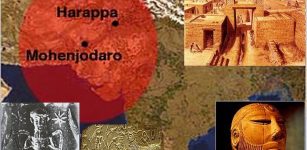 Indus Valley Civilization Far Ahead Of Its Time Has Baffled Scientists For Centuries
Ancient Technology | May 18, 2017
Indus Valley Civilization Far Ahead Of Its Time Has Baffled Scientists For Centuries
Ancient Technology | May 18, 2017 -
 Unique 2,000-Year-Old Decorated Roman Sandal Lost By Well-Cleaner Found In Spain
Archaeology | Oct 19, 2023
Unique 2,000-Year-Old Decorated Roman Sandal Lost By Well-Cleaner Found In Spain
Archaeology | Oct 19, 2023 -
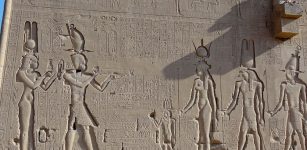 Why The Discovery Of Cleopatra’s Tomb Would Rewrite History
Featured Stories | Nov 16, 2022
Why The Discovery Of Cleopatra’s Tomb Would Rewrite History
Featured Stories | Nov 16, 2022 -
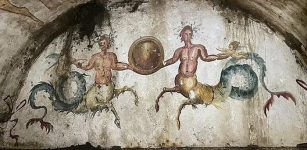 Remarkably Well-Preserved 2,000-Year-Old ‘Tomb Of Cerberus’ With Amazing Frescoes Discovered In Italy
Archaeology | Oct 12, 2023
Remarkably Well-Preserved 2,000-Year-Old ‘Tomb Of Cerberus’ With Amazing Frescoes Discovered In Italy
Archaeology | Oct 12, 2023 -
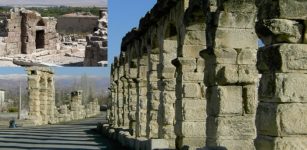 Ancient City Of Tyana And A 1600-Year-Old Rare Octagonal Church Unearthed In Central Anatolia Turkey
Archaeology | Aug 11, 2020
Ancient City Of Tyana And A 1600-Year-Old Rare Octagonal Church Unearthed In Central Anatolia Turkey
Archaeology | Aug 11, 2020 -
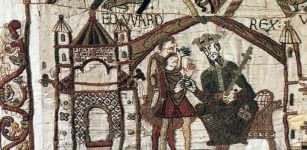 The Bayeux Tapestry: One Of The Great Historical Records Of The Middle Ages
Artifacts | Feb 29, 2016
The Bayeux Tapestry: One Of The Great Historical Records Of The Middle Ages
Artifacts | Feb 29, 2016 -
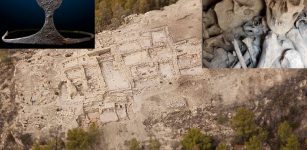 El Argar Civilization: Bronze Age Palace And Grave Goods Unearthed In Spain’s La Almoloya
Archaeology | Oct 15, 2014
El Argar Civilization: Bronze Age Palace And Grave Goods Unearthed In Spain’s La Almoloya
Archaeology | Oct 15, 2014 -
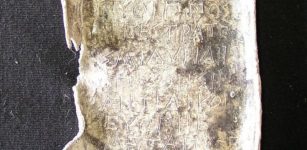 Curse Tablets With Messages To The Gods Of The Underworld Found In 2,500-Year-Old Well
Archaeology | Feb 7, 2020
Curse Tablets With Messages To The Gods Of The Underworld Found In 2,500-Year-Old Well
Archaeology | Feb 7, 2020 -
 Strange Underwater Mini-Pyramid Older Than Stonehenge With Unknown Purpose – Who Built It?
Ancient Mysteries | Sep 12, 2021
Strange Underwater Mini-Pyramid Older Than Stonehenge With Unknown Purpose – Who Built It?
Ancient Mysteries | Sep 12, 2021 -
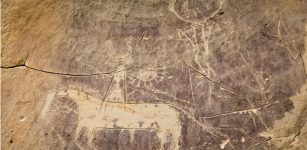 The Untold History Of The Horse In The American Plains Revealed
Archaeology | Mar 31, 2023
The Untold History Of The Horse In The American Plains Revealed
Archaeology | Mar 31, 2023 -
 Ouroboros – Cosmic Serpent And The Self-Devourer – Universal, Powerful Symbol Of Great Antiquity
Ancient Symbols | Oct 22, 2017
Ouroboros – Cosmic Serpent And The Self-Devourer – Universal, Powerful Symbol Of Great Antiquity
Ancient Symbols | Oct 22, 2017 -
 Forgotten And Overgrown Step Pyramid Of Koh Ker – Ancient Memory Of The Khmer Empire
Featured Stories | Apr 19, 2017
Forgotten And Overgrown Step Pyramid Of Koh Ker – Ancient Memory Of The Khmer Empire
Featured Stories | Apr 19, 2017 -
 Excavations Begin In Ancient City Of Antiocheia Ad Cragnum, Turkey
Archaeology | Sep 4, 2015
Excavations Begin In Ancient City Of Antiocheia Ad Cragnum, Turkey
Archaeology | Sep 4, 2015 -
 On This Day In History: Copernicus’ s Book Banned By Catholic Church – On Mar 5, 1616
News | Mar 5, 2017
On This Day In History: Copernicus’ s Book Banned By Catholic Church – On Mar 5, 1616
News | Mar 5, 2017 -
 On This Day In History: ‘Battle On The Ice’ – Army Of Prince Nevsky Against Teutonic Knights Was Fought – On Apr 5, 1242
News | Apr 5, 2016
On This Day In History: ‘Battle On The Ice’ – Army Of Prince Nevsky Against Teutonic Knights Was Fought – On Apr 5, 1242
News | Apr 5, 2016 -
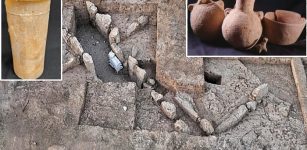 Ancient 5,500-Year-Old Gate Was Discovered Recently At Tell Erani, Near The Kiryat Gat Industrial Zone, Israel
Archaeology | Aug 17, 2023
Ancient 5,500-Year-Old Gate Was Discovered Recently At Tell Erani, Near The Kiryat Gat Industrial Zone, Israel
Archaeology | Aug 17, 2023 -
 AI Discovers Hundreds Of Unusual Nazca Geoglyphs In The Desert
Places | Oct 7, 2024
AI Discovers Hundreds Of Unusual Nazca Geoglyphs In The Desert
Places | Oct 7, 2024 -
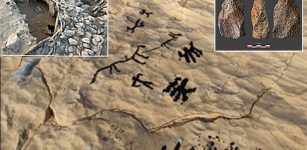 Unique Finds Discovered In Oman – Rub’al-Chali Desert Reveals Its Secrets
Archaeology | Apr 20, 2023
Unique Finds Discovered In Oman – Rub’al-Chali Desert Reveals Its Secrets
Archaeology | Apr 20, 2023 -
 Mystery Of The Giant Boulder In North Salem
Featured Stories | Aug 8, 2019
Mystery Of The Giant Boulder In North Salem
Featured Stories | Aug 8, 2019

